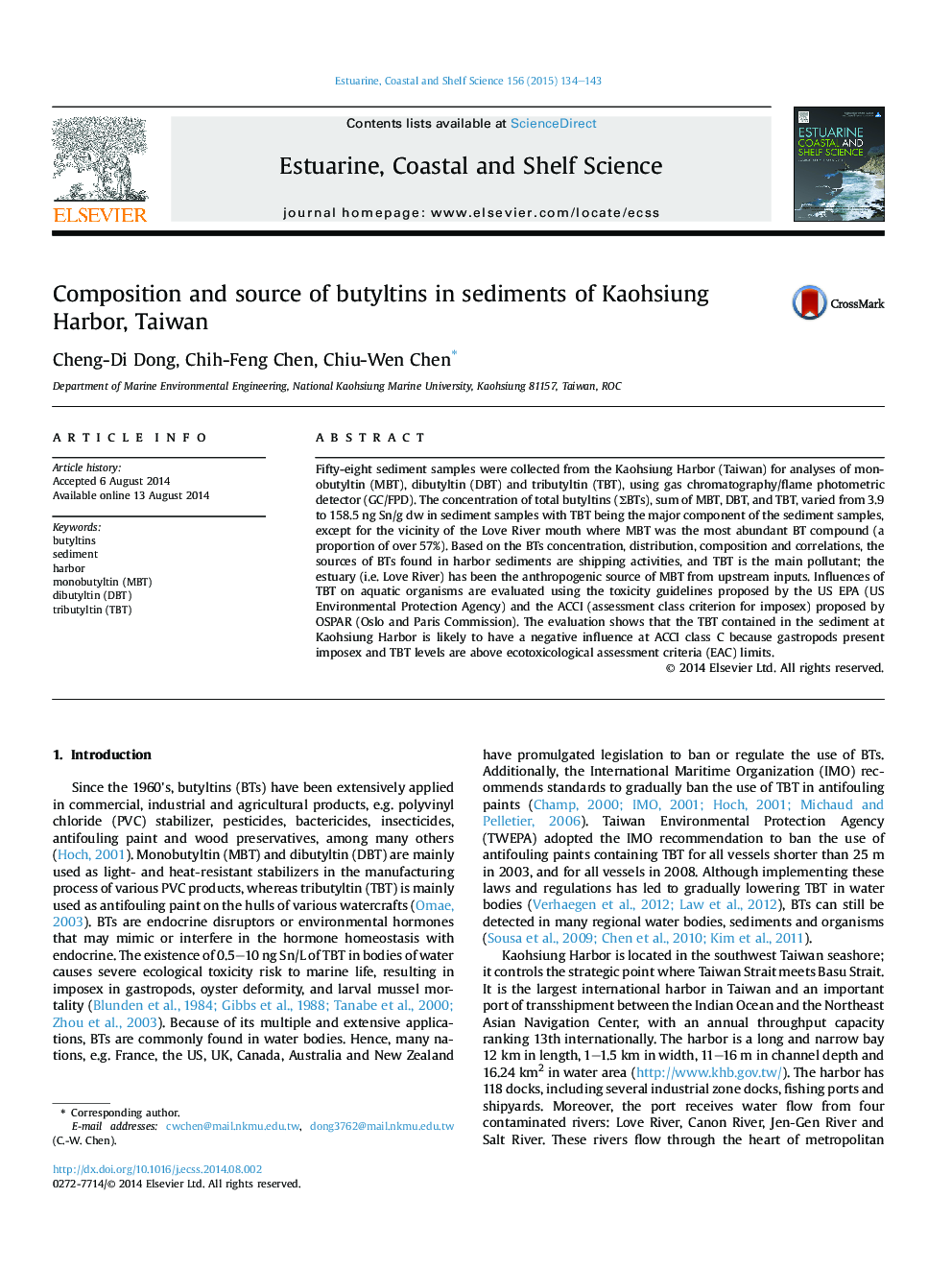| Article ID | Journal | Published Year | Pages | File Type |
|---|---|---|---|---|
| 4539575 | Estuarine, Coastal and Shelf Science | 2015 | 10 Pages |
Abstract
Fifty-eight sediment samples were collected from the Kaohsiung Harbor (Taiwan) for analyses of monobutyltin (MBT), dibutyltin (DBT) and tributyltin (TBT), using gas chromatography/flame photometric detector (GC/FPD). The concentration of total butyltins (ΣBTs), sum of MBT, DBT, and TBT, varied from 3.9 to 158.5 ng Sn/g dw in sediment samples with TBT being the major component of the sediment samples, except for the vicinity of the Love River mouth where MBT was the most abundant BT compound (a proportion of over 57%). Based on the BTs concentration, distribution, composition and correlations, the sources of BTs found in harbor sediments are shipping activities, and TBT is the main pollutant; the estuary (i.e. Love River) has been the anthropogenic source of MBT from upstream inputs. Influences of TBT on aquatic organisms are evaluated using the toxicity guidelines proposed by the US EPA (US Environmental Protection Agency) and the ACCI (assessment class criterion for imposex) proposed by OSPAR (Oslo and Paris Commission). The evaluation shows that the TBT contained in the sediment at Kaohsiung Harbor is likely to have a negative influence at ACCI class C because gastropods present imposex and TBT levels are above ecotoxicological assessment criteria (EAC) limits.
Related Topics
Physical Sciences and Engineering
Earth and Planetary Sciences
Geology
Authors
Cheng-Di Dong, Chih-Feng Chen, Chiu-Wen Chen,
